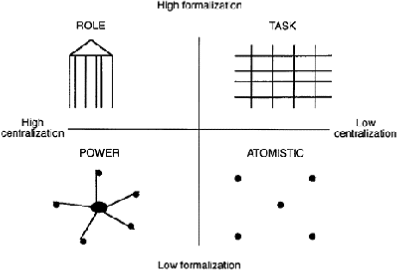SKEDSOFT
Introduction:
The purpose of an analysis would be to assess the degree to which the predominant culture reflects the needs and constraints of the company.
Xerox cultural change:
|
From |
To |
|
Incomplete or ambiguous understanding of customer requirements |
Use of systematic approach to understand and satisfy both internal and external requirements |
|
An orientation to short-term objectives and actions with limited long-term perspective |
The deliberate balance of long-term goals with successive short-term objectives |
|
Acceptance of a certain margin of error and subsequent corrective action as the norm |
Striving for continuous improvement in error-free output in meeting customer requirements and doing things right first time |
|
Unstructured individualistic problem-solving decision-making |
Predominantly participative and disciplined problem-solving and decision-making using a common approach |
|
A management style with uncertain objectives that instills fear or failure |
An open style with clear and consistent objectives which encourages problem-solving and group-derived solution |
Harrison and Handy’s four culture roles

- The formation of culture depends on a number of factors including company history, ownership, organization structure, technology, critical business incidents and environments etc.
- The four cultures they discuss are power, role, task and atomistic.
- The purpose of an analysis would be to assess the degree to which the predominant culture reflects the needs and constraints of the company.
- They use diagrammatic examples to illustrate their ideas of cultural types with high versus low formalization and high versus low centralization
Power culture: The power culture represents the family business with a concentration of power. This power is radiated out from the centre by a key person to others in the family who then transfer the information on to other functions
Task culture: The task culture is characterized by a close liaison between departments and specialists in an organization that is involved in research and development activities. Temporary interdisciplinary project groups are organized around a task.
Atomistic culture: Atomistic culture is characterized by the decentralized informal approach where independent experts joined together for mutual convenience, e.g. a group practice or a consultancy.
Role cultures: The role cultures are typically bureaucratic organizations managed by time and motion studies and precise mechanical specifications with authority based on job descriptions.
A list of the characteristics of strong cultures that they identified is given below:
• had a widely shared philosophy of management;
• emphasized the importance of people to the success of the organization;
• encouraged rituals and ceremonies to celebrate company events;